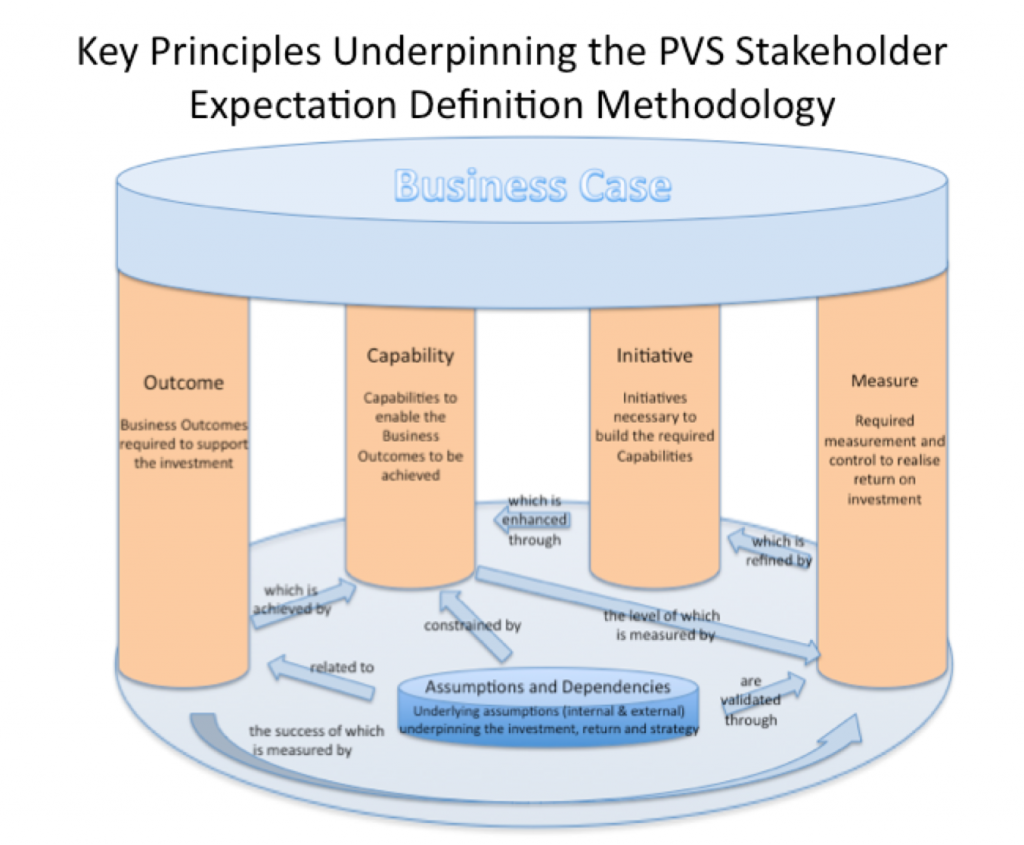

Stakeholder Expectation Definition (SED) was developed to ensure that stakeholders provide a solid business base for a project to work towards when developing the business requirements. The approach formalises a set of disciplines to ensure that business case outcomes are clearly linked to a set of capabilities and that boundaries for the capabilities have been defined and are accepted by the stakeholders.
Benefits
- Ensure that there is clarity around the purpose and intent for the capability being delivered by the project
- Clearly communicates the stakeholders intended usage of the capabilities being delivered by the project and the contribution the capability provides to achieve the value being proposed in the business case
- Validate that stakeholders impacted by the initiative are in agreement as to the intent and are committed to the outcomes and value incorporated in the business case
- Efficiently collect relevant information from the stakeholders regarding usage of the capability
- Provides a scope framework for the development of the requirements that can be used as a reference base to sign-off the requirements and to validate that the solution would be fit for purpose
- Provide the requirements team with a clear direction, business context, boundaries and performance objective for the capability that will be developed by the project
- Provides a sound platform for project kick-off and ensures that the project team are focused, have clear direction for the design and a single source of accepted intent from stakeholders early in the project life cycle

Consistently improve the success potential of projects by
strengthening the starting point for the design phase